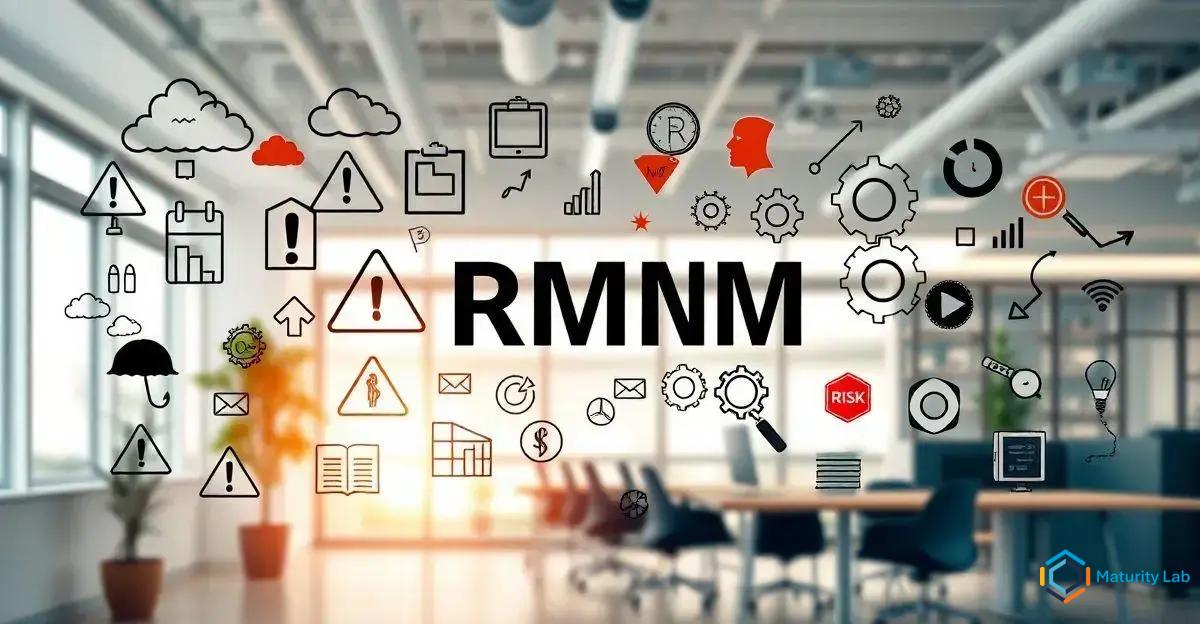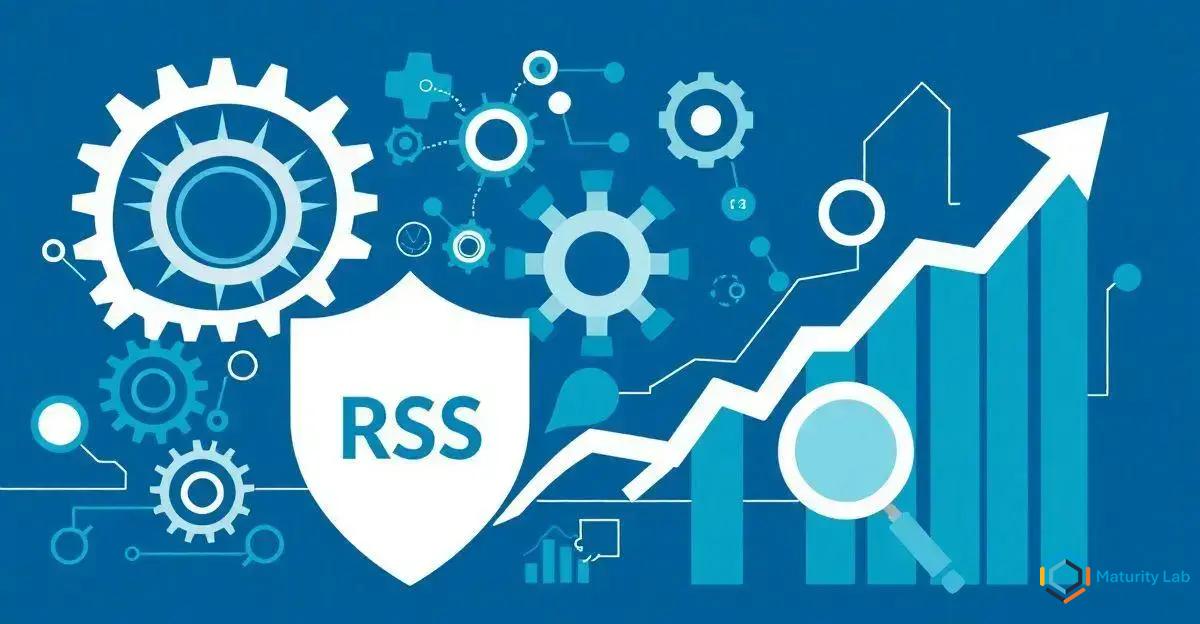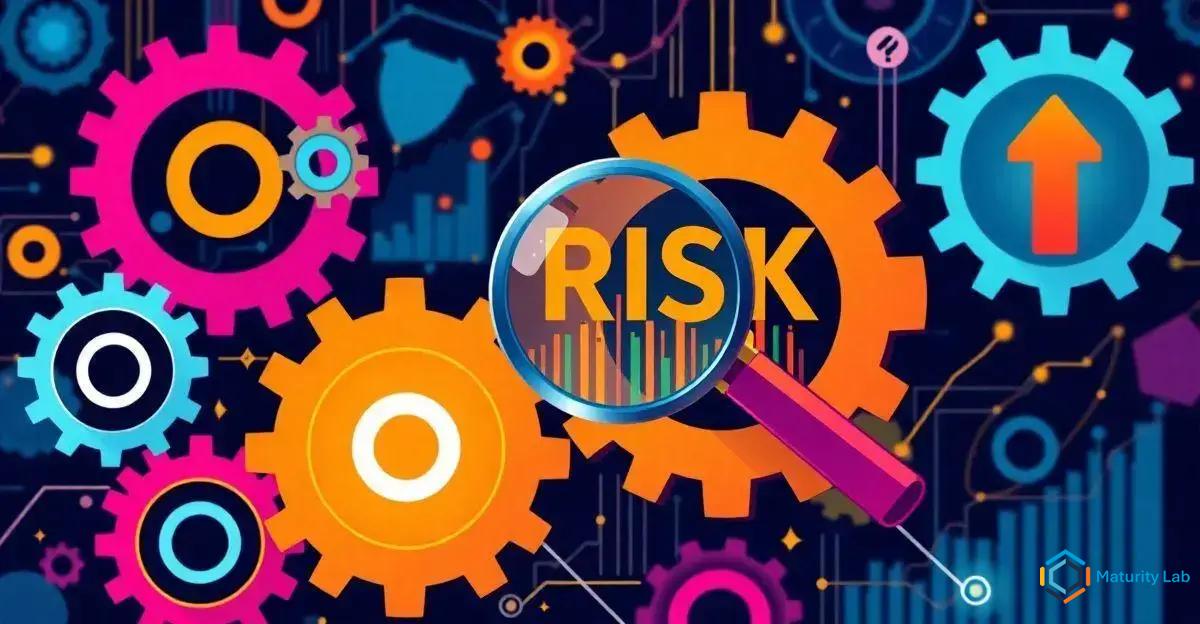The Risk Maturity Model (RMMM) is a structured framework designed to enhance risk management by evaluating the maturity of risk processes and implementing targeted improvements. It focuses on continuous improvement and collaboration, fostering a proactive risk management culture. RMMM emphasizes early identification of potential risks and the development of effective mitigation strategies, enabling organizations to anticipate and address threats before they arise. Continuous monitoring of these strategies ensures their effectiveness, helping businesses build resilience and achieve long-term success in an increasingly complex and uncertain environment.
In today’s dynamic business environment, effectively managing risks is paramount to ensuring sustainable success. The Risk Maturity Model (RMMM) provides a structured approach to identifying and mitigating risks, thereby enhancing organizational resilience. By focusing on risk identification and preventive analysis, businesses can proactively address potential threats and capitalize on opportunities. This article delves into the intricacies of RMMM, offering insights into its application and benefits.
Understanding the Role of RMMM in Risk Management

The Risk Maturity Model (RMMM) serves as a comprehensive framework for assessing and enhancing an organization’s risk management capabilities. By systematically evaluating the maturity of risk processes, RMMM enables businesses to identify gaps and implement improvements that align with their strategic objectives.
One of the core functions of RMMM is to provide a clear roadmap for risk management development. This roadmap is segmented into various maturity levels, each representing a different stage of risk management proficiency. These levels typically range from initial, where risk processes are ad hoc and reactive, to optimized, where risk management is fully integrated into the organizational culture and decision-making processes.
At the initial level, organizations often lack formal risk management practices, relying instead on individual judgment and experience. As they progress to higher maturity levels, they begin to establish structured risk identification processes, leveraging tools and methodologies to systematically identify potential risks. This transition is crucial as it moves the organization from a reactive stance to a proactive approach, where risks are anticipated and managed before they can impact the business adversely.
Continuous Improvement and Collaboration
RMMM also emphasizes the importance of continuous improvement in risk management practices. By regularly assessing the maturity of their risk processes, organizations can identify areas for enhancement and implement targeted actions to address these gaps. This iterative process ensures that risk management practices evolve in line with changing business environments and emerging threats.
Furthermore, RMMM facilitates better communication and collaboration across the organization. By providing a common language and framework for discussing risks, it helps to break down silos and promote a more integrated approach to risk management. This collaborative environment is essential for effectively managing complex risks that span multiple departments or functions.
In summary, understanding the role of RMMM in risk management is pivotal for organizations aiming to enhance their risk management capabilities. By providing a structured framework for assessing and improving risk processes, RMMM helps businesses to proactively identify and mitigate risks, thereby ensuring long-term sustainability and success.
Implementing Preventive Analysis for Enhanced Risk Mitigation

Implementing preventive analysis within the framework of the Risk Maturity Model (RMMM) is a critical step toward enhancing an organization’s risk mitigation strategies. Preventive analysis involves systematically identifying potential risks before they materialize and taking proactive measures to mitigate their impact. This forward-thinking approach is essential for maintaining business continuity and achieving strategic objectives.
Preventive analysis begins with a thorough risk identification process. Organizations must employ a variety of tools and techniques to uncover potential risks, including risk assessments, scenario analysis, and historical data reviews. By leveraging these methods, businesses can gain a comprehensive understanding of the risks they face, ranging from operational disruptions to strategic threats.
Once risks are identified, the next step is to analyze their potential impact and likelihood. This involves evaluating the severity of each risk and its probability of occurrence. Techniques such as risk matrices and heat maps are commonly used to visualize and prioritize risks, enabling organizations to focus their resources on the most critical threats. By understanding the potential consequences of each risk, businesses can develop targeted mitigation strategies that address the root causes and reduce the likelihood of occurrence.
A key component of preventive analysis is the development of risk mitigation plans.
These plans outline specific actions that can be taken to prevent risks from materializing or to minimize their impact if they do occur. Mitigation strategies may include implementing new policies and procedures, investing in technology solutions, or enhancing employee training programs. The goal is to create a robust risk management infrastructure that can effectively respond to emerging threats.
Continuous monitoring and review are also essential elements of preventive analysis. Organizations must regularly assess the effectiveness of their risk mitigation strategies and make adjustments as needed. This iterative process ensures that risk management practices remain relevant and effective in the face of evolving business environments and emerging risks. Tools such as key risk indicators (KRIs) and risk dashboards can provide real-time insights into risk levels and help organizations stay ahead of potential threats.
Moreover, preventive analysis fosters a proactive risk management culture within the organization. By emphasizing the importance of anticipating and addressing risks before they escalate, businesses can cultivate a mindset of vigilance and preparedness among employees. This cultural shift is crucial for embedding risk management into the organizational DNA and ensuring that it becomes a core component of decision-making processes.
In conclusion, implementing preventive analysis as part of the RMMM framework is vital for enhancing risk mitigation efforts. By systematically identifying, analyzing, and addressing potential risks, organizations can build resilience and ensure long-term success in an increasingly complex and uncertain business landscape.
In conclusion, the Risk Maturity Model (RMMM) offers a structured and systematic approach to enhancing an organization’s risk management capabilities.
By understanding the role of RMMM in risk management, businesses can identify gaps in their current processes and implement targeted improvements that align with their strategic objectives.
The model’s emphasis on continuous improvement and collaboration fosters a proactive risk management culture, which is essential for navigating today’s complex business environment.
Implementing Preventive Analysis
Implementing preventive analysis within the RMMM framework further strengthens an organization’s ability to mitigate risks.
By systematically identifying potential threats and developing robust mitigation strategies, businesses can anticipate and address risks before they materialize, thereby safeguarding their operations and ensuring long-term sustainability.
Continuous monitoring and review of risk mitigation efforts ensure that these strategies remain effective and relevant in the face of evolving challenges.
Ultimately, the integration of RMMM and preventive analysis equips organizations with the tools and insights needed to proactively manage risks, enhance resilience, and achieve sustained success.
As businesses continue to operate in an increasingly uncertain world, adopting these practices will be crucial for maintaining competitive advantage and driving growth.
Frequently Asked Questions about RMMM, Risk Identification, and Preventive Analysis
What is the Risk Maturity Model (RMMM)?
The Risk Maturity Model (RMMM) is a framework that assesses and enhances an organization’s risk management capabilities by evaluating the maturity of its risk processes and providing a roadmap for improvement.
How does RMMM help in risk management?
RMMM helps organizations identify gaps in their risk management processes, implement targeted improvements, and foster a proactive risk management culture through continuous assessment and enhancement.
What are the maturity levels in RMMM?
The maturity levels in RMMM typically range from initial, where risk processes are ad hoc and reactive, to optimized, where risk management is fully integrated into the organizational culture and decision-making processes.
What is preventive analysis in the context of RMMM?
Preventive analysis involves systematically identifying potential risks before they materialize and taking proactive measures to mitigate their impact, thereby enhancing an organization’s risk mitigation strategies.
How can organizations implement preventive analysis?
Organizations can implement preventive analysis by employing tools and techniques such as risk assessments, scenario analysis, and historical data reviews to identify risks, analyze their impact and likelihood, and develop targeted mitigation strategies.
Why is continuous monitoring important in risk management?
Continuous monitoring ensures that risk mitigation strategies remain effective and relevant in the face of evolving business environments and emerging risks, allowing organizations to stay ahead of potential threats and maintain resilience.

